Filesystems and Storage
Overview
Teaching: 15 min
Exercises: 30 minQuestions
Where can I store my data?
What is the difference between scratch and home filestore?
Objectives
Understand the difference between home and scratch directories
Understand how to copy files between your computer and the cluster
Filesystems and Storage
What is a filesystem?
Storage on most compute systems is not what and where you think they are! Physical disks are bundled together into a virtual volume; this virtual volume may represent one filesystem, or may be divided up, or partitioned, into multiple filesystems. And your directories then reside within one of these fileystems. Filesystems are accessed over the network through mount points.
Most HPC systems will offer you several different filesystems, the most common are:
- home: where you land when you first login. Usually backed up and limited in size. On Super Computing Wales we give between 50 and 100GB.
- project: shared between all users of a project.
- scratch: temporary working space. Faster access, not backed up. No quota, but old files might get deleted. DON’T STORE RESULTS HERE!
Important!! Ensure that you don’t store anything longer than necessary on scratch, this can negatively affect other people’s jobs on the system.
Accessing your filestore
How much quota do I have left on my home directory?
Login to the head node and run the quota command. This will tell you how much space is left in your home directory.
$ quota -vs
Disk quotas for user pi (uid 1000):
Filesystem space quota limit grace files quota limit grace
/dev/loop0 159M 300M 350M 5439* 3000 3500 7days
Copying data to your PC
You can copy files to/from the cluster using the secure copy protocol (SCP) or secure file transfer protocol (SFTP).
Copying data using SFTP
Use the sftp command and connect to the system. This takes the argument of the username followed by an @ symbol and then the hostname. Optionally you can specify what directory to start in by putting a : symbol after this and adding the directory name. The command below will start in /home/jane/data, if no directory is specified then sftp defaults to your home directory.
sftp jane@10.0.0.10:/home/jane/data
jane@10.0.0.10's password:
Connected to 10.0.0.10.
Changing to: /home/jane/data
sftp> ls
The sftp and scp commands should be available on all Linux and Mac systems. Windows 10 systems with the April 2018 update (Spring 2018 Creators Edition) should also include it. For older versions On Windows systems they can be made available if you install the Linux Subsystem for Windows (Windows 10 only) or through Git for Windows.
Aberystwyth University Windows desktops already have these commands installed.
SFTP commands
SFTP uses many of the same commands as the Unix command line and the older FTP system which it has replaced. Most commnads by default run on the remote system, putting an ! in front of the command runs it on the local system. Some common commands are shown below.
ls - lists files on the remote system
!ls - lists files on the local system
pwd - reports the current directory on the local system
!pwd - reports the current directory on the remote system
get - gets a file from the remote system
put - sends a file to the remote system
rm - delete a file on the remote system
cd - change directory on the remote system
lcd - change directory on the local system
Copying data using Filezilla
Filezilla is a graphical SCP/SFTP client available for Windows, Mac and Linux. You can download it from Filezilla download
Open filezilla and type sftp://10.0.0.10 into the host box. Enter your username and password in the username/password boxes.
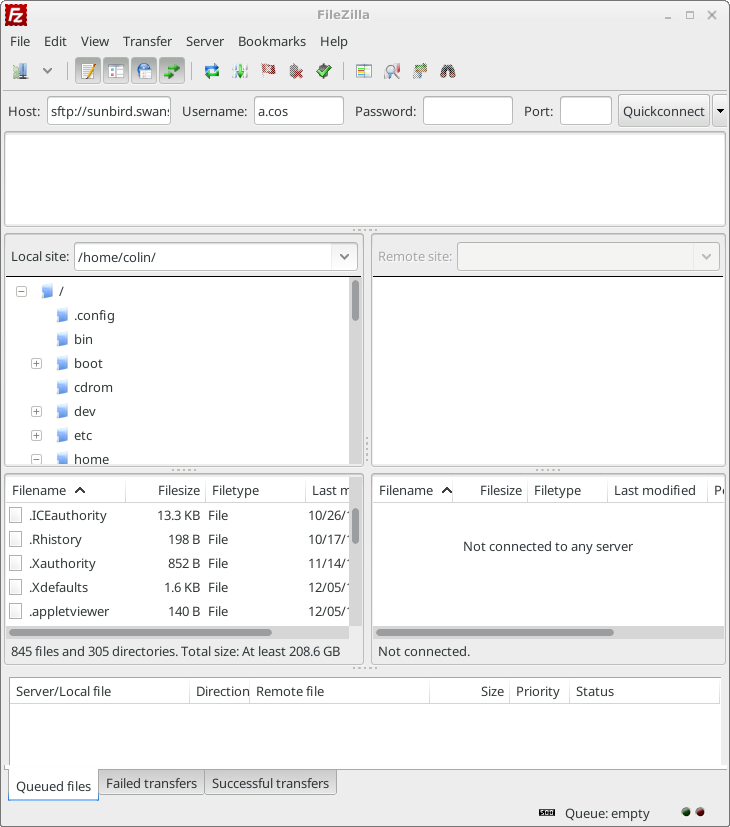
Click Quickconnect and a connection will be started. The first time you connect you will be asked to verify the host key, tick the “Always trust this host, add key to the cache” box to stop this message appearing again in future.
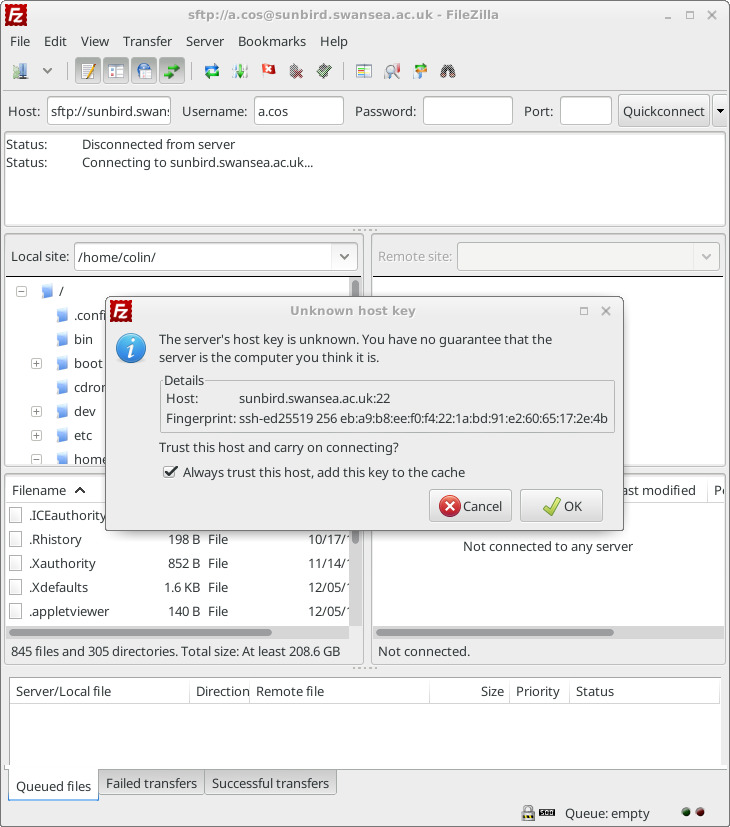
You should now have some files in the right hand side of the window. These are on the remote system, the list on the left hand side is your local system.
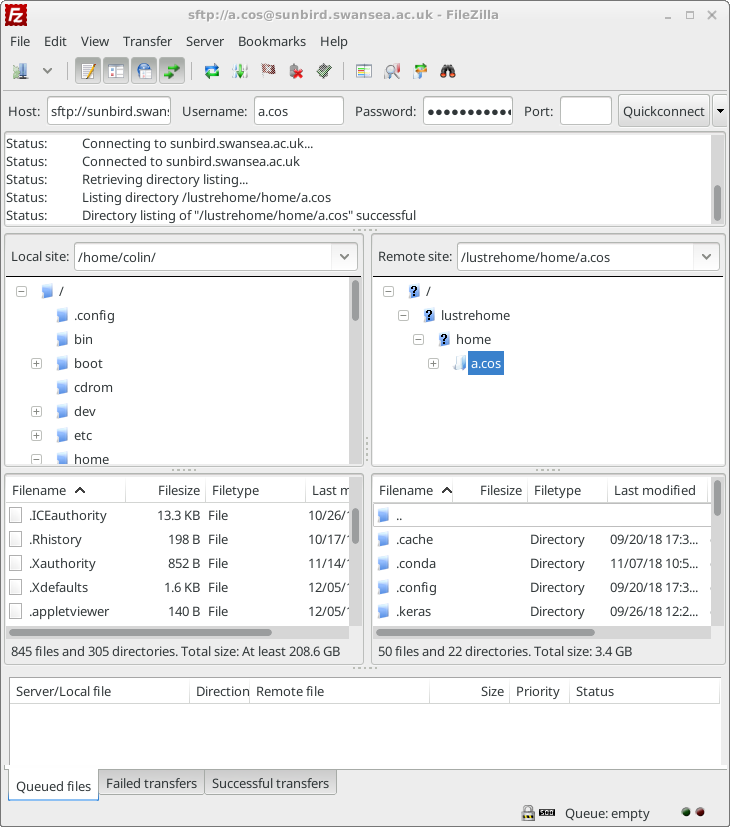
Files can be transferred either by dragging and dropping them from one side to the other. Or you can right click on a remote file and choose “Download” or a local file and choose “Upload”.
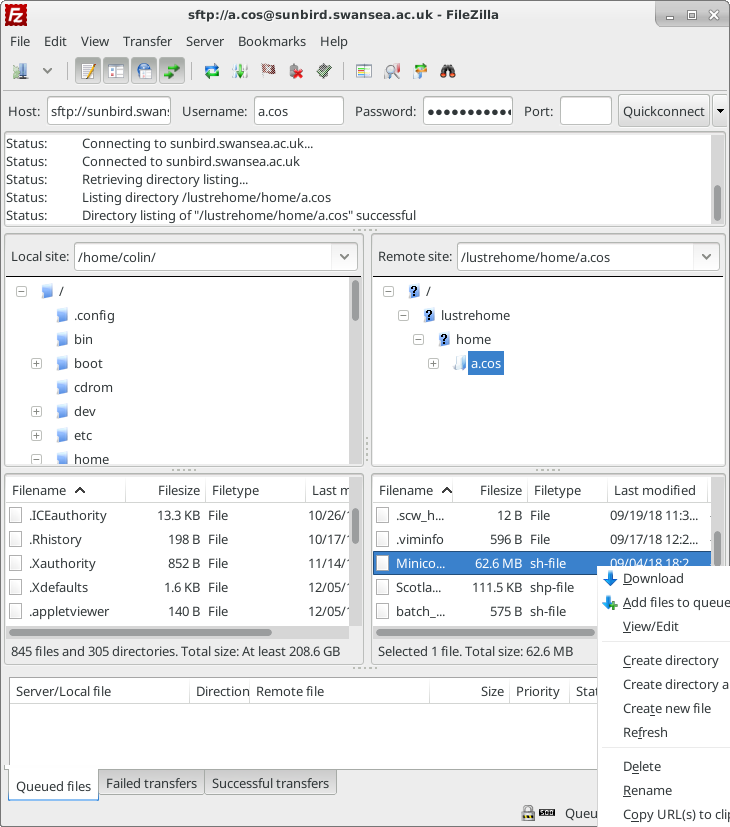
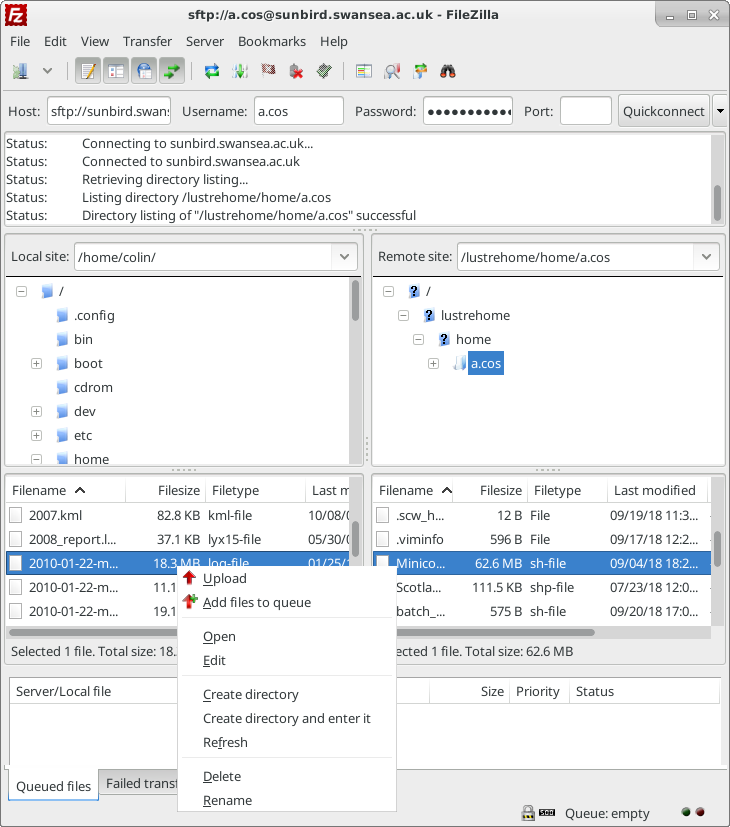
You can change directory on the remote host by typing a path into the “Remote site:” box. For example type in /scratch/user.name (where user.name is your username) to access your scratch directory.
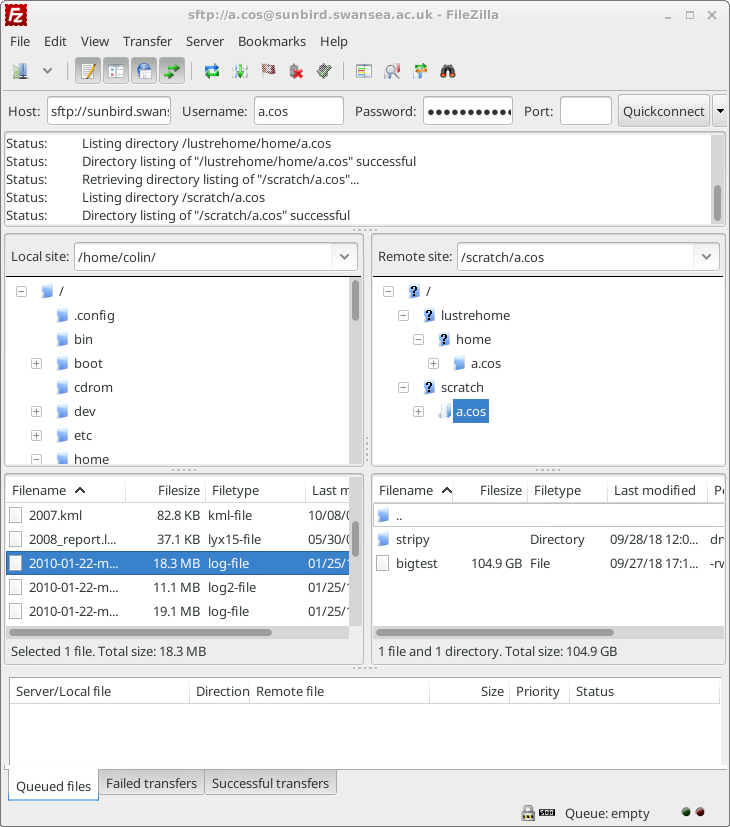
Exercises
Using the
quotacommand.
- Login to the head node.
- Run the
quota -vscommand.- How much space have you used and how much do you have left?
- If you had a job that resulted in 60GB of files would you have enough space to store them?
Copying files.
- Login to the head node.
- Create a file called hello.txt by using the nano text editor (or the editor of your choice) and typing
nano hello.txt. Enter some text into the file and press Ctrl+X to save it.- Use either Filezilla or SCP/SFTP to copy the file to your computer.
- Create a file on your computer using a text editor. Copy that file to your cluster home directory using Filezilla or SCP/SFTP and examine its conents with nano on the head node.
Key Points
The SCP and SFTP protocols can copy files to a cluster.
Most real clusters have large disks.
Most real clusters have a backed up space limited home and a larger scratch drive for temporary data.